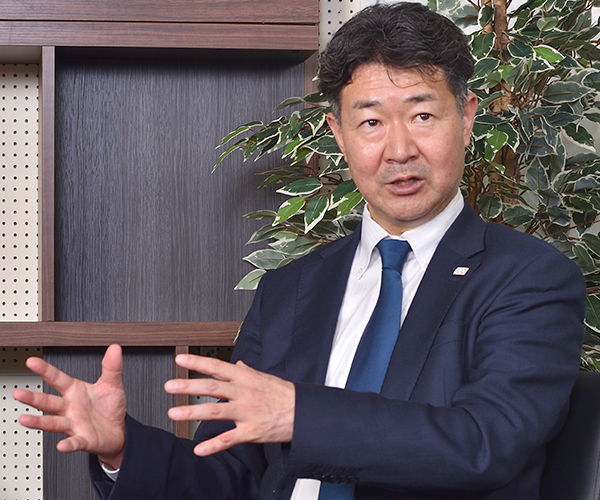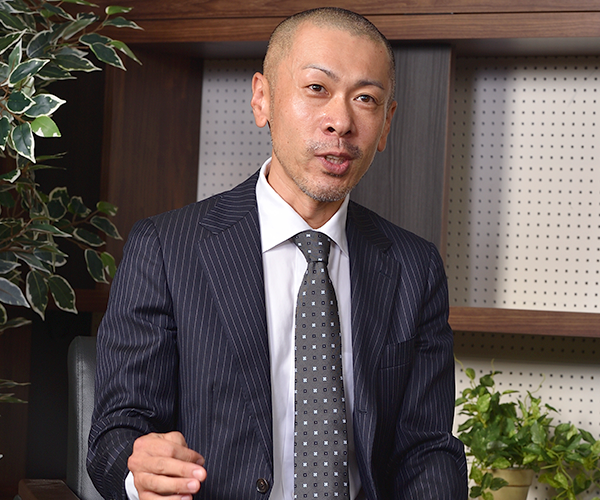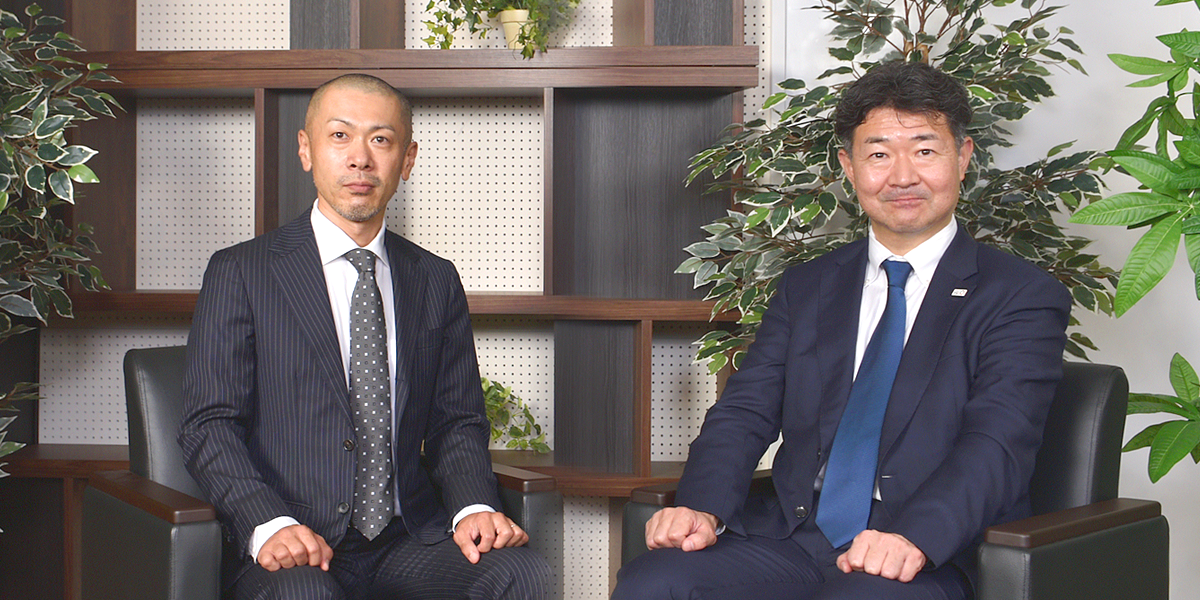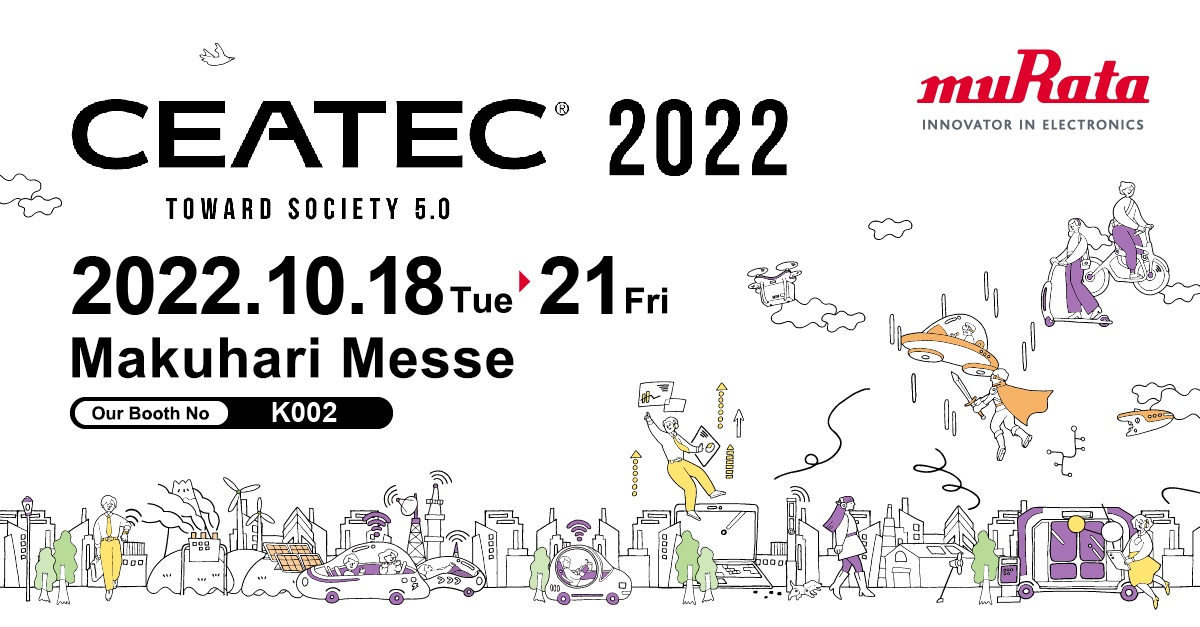Building IIoT Systems to Serve as the Foundations of DX and GX with Beyond 5G/6G and More Advanced IoT Devices (Part 1)
Social systems and business are undergoing reforms through digital transformation (DX) and green transformation (GX) aimed at the realization of a sustainable and prosperous society. It is essential to utilize industrial IoT (IIoT) systems, which serve as the foundations to utilize digital information to implement DX and GX. Professor Nakao of the University of Tokyo is researching a wide range of technologies with an overview of entire IIoT systems, from elemental technologies to applications. Tomokazu Shimomae of Murata Manufacturing is in charge of planning next-generation information and communications-related business. The two of them discussed the state of IIoT systems to meet the demands of the times. They also talked about the present and future of the technologies sought for that. In Part 1, we introduce what they discussed from their respective perspectives as a researcher and a business operator with a focus on the communications infrastructure indispensable for advanced data transmission in IIoT systems.
We are now breaking free from being a society that single-mindedly pursues only growth to being a society that can achieve sustainable prosperity. Governments, municipalities, and companies around the world are now working on the creation of mechanisms and operational reforms to adapt to the social and business environment of the near future in line with two megatrends.
One of those megatrends is digital transformation (DX). This is an initiative aiming to build a business structure that enables dramatic improvements in operational efficiency and the creation of new value by utilizing the digital information generated in the course of operations. The other megatrend is green transformation (GX). This is an initiative aiming to build a business structure that can also contribute to global environmental conservation such as by decarbonization while at the same time promoting the maintenance and enhancement of prosperity and business competitiveness.
It is necessary to have a mechanism to implement rational optimization based on detailed analysis and to take measures focused on the key points without waste by ascertaining movements in social and business activities in real time and accurately through quantitative data to effectively and efficiently implement DX and GX. The information foundations that will support society and business in the near future to meet these demands are industrial IoT (IIoT) systems.
Steady Expansion in the Range of 5G Use with Smartphones
Commercial services of the fifth-generation mobile communications system (5G) started in Japan in March 2020. Many people are already using 5G-compatible smartphones.
"We can say that the areas where it is possible to use 5G on smartphones are steadily expanding," observes Professor Nakao. Four telecommunications carriers have been allocated 5G frequency bands in Japan. One of those companies has completed converting a number of areas to 5G as of February 2022. Those areas include all station platforms and between stations on Tokyo's Yamanote Line and Osaka's Loop Line; the platforms of 47 stations on four lines in Kanto; and 80 commercial areas around Japan such as Sapporo's Odori and Shinjuku. Another company announced that it will speed up its schedule to expand its 5G areas in March 2022. The company says it plans to expand 5G coverage to all 1,741 municipalities in Japan with the aim of realizing a population coverage rate of 90% or more by March 2024. Furthermore, one more company announced that its 5G population coverage rate broke through the 90% barrier in April 2022. The latter company also says it utilizes virtualization technologies to be able to quickly transition to 5G with the minimum level of equipment from 4G for which its population coverage rate has reached 96%.

Professor Akihiro Nakao
Professor in the Department of Systems Innovation, Graduate School of Engineering, University of Tokyo
Specially Appointed Advisor to the President of the University of Tokyo
Completed a master's course in the Department of Information Engineering, Graduate School of Engineering, University of Tokyo, in 1993. After working at the IBM Austin Research Laboratory in Texas, U.S., and the IBM Research – Tokyo, acquired a master's degree and Ph.D. in Information Studies from Princeton Graduate School in the U.S. Has been teaching at the University of Tokyo since 2005 and has held his current posts since April 2021.
True Value of 5G in the IIoT Will Be Demonstrated from Now
Although not very well known by regular users of mobile phones, the functions and performance that should be realized for 5G have been formulated under the assumption of usage situations different from mobile phone services for 4G and earlier.
Technical specifications were formulated and base stations and other communications infrastructure were developed for 4G and earlier with wireless communications for devices carried by individual users as the focus of usage scenarios. Advances in technology have led to improved communication speeds and increased capacities. We have seen 2G, which mainly involved the exchange of voice and text information, evolve into 3G, which enabled web browsing on the Internet and the exchange of photographs. That then developed into the 4G that made it possible to view videos and to use advanced net services on smartphones. However, if we survey these advances, we find that there was no change to the idea of it being a communications infrastructure developed mainly under the assumption that devices used by individuals would exchange information between them.
In contrast to this, 5G is a "communications infrastructure developed under the assumption that information will be exchanged between various devices, equipment, and facilities used in cities, factories, offices, homes, and other locations. In other words, we can call it a communications infrastructure aiming for the realization of IIoT systems" (Professor Nakao).
Of course, 5G also comes with functions that improve the performance of smartphones. However, many functions useful for building advanced IIoT systems to understand in detail the conditions and changes of things and environments are incorporated into the technical specifications for 5G. For example, high-speed and large-capacity communications with a peak rate of 20 Gbps are important to closely exchange data between information devices. Moreover, a low latency of 1 msec or less is the necessary performance to ensure multiple devices combine and function like a single system. Furthermore, the function to be able to simultaneously connect to up to 1 million devices within an area of 1 km² is essential to simultaneously access a large number of distributed IoT devices.
Professor Nakao says the following: "Looking at the service area map for the 5G infrastructure that has been built up to the present point in time, the population coverage rate has broken through 90%. However, the area coverage rate is still full of blank spaces. It is very important to expand the area coverage rate to increase the number of usage scenarios of IIoT systems that communicate with things instead of individual users. Moreover, a lot of the 5G infrastructure built so far has been realized by diverting existing equipment that supports frequencies for 4G. Accordingly, the high speeds and large capacities inherent to 5G have not been realized. In other words, we can say that we are still waiting for the time when it will be possible to demonstrate the true value of 5G. The development of 5G infrastructure will further progress and the pace of the construction and operation of IIoT systems will pick up speed from now. That will greatly change the way in which we should live, do business, and engage in social activities."
Enabling the use of the high-speed and large-capacity communications inherent to 5G will make it possible to instantly reinvigorate media-related businesses and services that handle large volumes of metaverse-related content utilizing virtual reality (VR) and augmented reality (AR). In addition, if it becomes possible to use low latency and simultaneous multiple connections, many machines will mutually connect to each other in IIoT systems. They will then share the data that each of them obtains from the sensors installed in them. It seems likely that by analyzing big data it will become possible to predict phenomena and troubles that will occur in the future and to build social infrastructure and business systems capable of autonomously responding to changes in the social and business environments. Through that, the pace of DX and GX initiatives will accelerate and the areas where they are applied will also expand.
Beyond 5G/6G Development Has Already Started
We are at a stage where the pace of the development of infrastructure for 5G will speed up from now. Nonetheless, research and development to realize Beyond 5G/6G in the next generation has begun in countries around the world, aiming for commercialization by as early as 2030. Preparations have already started to further evolve IIoT systems to be even more advanced looking ahead to the near future. The Ministry of Internal Affairs and Communications in Japan has also formulated the "Beyond 5G Promotion Strategy: Roadmap towards 6G." The government has started working on this in two phases: the Leading Activities Phase and the Activities Acceleration Phase. It plans to steadily and appropriately increase the sophistication of the information infrastructure that supports DX and GX through that.
The government has set a development deadline and is working intensively on the Leading Activities Phase among its initiatives in Japan. It is aiming to create numerous successful model cases to create a Beyond 5G Ready environment within five years at the latest. The results of these leading activities will be presented to the world at the Beyond 5G Ready Showcase at the Osaka Kansai Expo to be held in 2025. The plan is to use that as an impetus to lead to an acceleration in the pace of the global expansion in the subsequent Activities Acceleration Phase.
Standardization activities for 6G will finally begin in 2025. The Beyond 5G Promotion Consortium was established in December 2020 to be able to powerfully and proactively tackle technological development and standardization in an all-Japan structure in which industry, academia, and the government collaborate based on the Beyond 5G promotion strategy. Discussions are now underway on a vision with a white paper and verification of that globally. Furthermore, the Beyond 5G New Business Strategy Center has also been established. This is an organization to strategically promote the acquisition and standardization of the intellectual properties for technologies that have been developed. Countries around the world have begun to invest vast sums in relation to Beyond 5G. The Ministry of Internal Affairs and Communications in Japan has announced that it will invest more than 100 billion yen in Beyond 5G. Technological development competition in this field will surely intensify in the future.
Envisioning Applications with Value and Conceiving of Next-generation Communications Infrastructure
The communications infrastructure from 5G and beyond will likely have a higher level of publicness than 4G and earlier, which will support the resolution of social issues and the creation of business value by application to IIoT systems. Furthermore, with 6G, we expect to aim for an improvement in performance greatly beyond that of 5G, with ultra-high-speeds and large capacities exceeding 100 Gbps, ultra-low latency that is always stable of 1 msec or less, and ultra-multi-connections that connect 10 million devices per 1 km². In addition, we will expand the areas where communications are possible into the sky, sea, and space instead of just being limited to land. We will realize quality assurance in a wide range of usage cases. We will then also aim to achieve ultra-low power consumption and lower costs during communications. It will become possible to implement even more advanced DX and GX in a wider range of locations than with 5G in the era when 6G is put into practical use.
Technologies that satisfy the diverse technical requirements of 6G are likely to be considerably more advanced than 5G. Furthermore, it will no longer be possible to meet all needs with one definitive technology. The respective ease-of-use and applicable use cases are already becoming different in the Sub 6 frequency band and the milli-wave frequency band in 5G. The trend to use different communications technologies depending on the application is likely to become even more pronounced with 6G. Professor Nakao gives the reason for that: "It has become important to envision specific use cases from the specification formulation stage and to then proceed with technological development based on those needs. Instead of thinking about what to draw after sharpening your pencil, there is a need to build infrastructure that envisions what you want to draw while sharpening your pencil into a suitable shape."
Murata Manufacturing (hereinafter "Murata") has contributed to the development of mobile phones through the development and provision of front-end modules equipped in devices and other equipment up to now. Currently, we are developing diverse elemental technologies in anticipation of the arrival of the Beyond 5G era to come. Those elemental technologies include boards that improve conductor loss in addition to antennas, power amplifiers, low-noise amplifiers and other elements, and circuits.
It is expected that 6G will utilize terahertz waves, which have an even higher frequency than 5G radio waves. It may be necessary to optimally design components from the materials level to support that. It takes a considerable amount of time to develop materials with excellent properties. Moreover, this is also a technical area where it is difficult to stipulate development guidelines. Accordingly, we are also proactively exchanging opinions and linking up with external organizations in addition to utilizing our in-house knowledge.
Shimomae continues the conversation: "The way infrastructure should be will change greatly with Beyond 5G/6G. We will need to ask ourselves what kind of technologies are required from us instead of developing technologies by setting a simple target such as to support a new frequency band. We will develop technologies while assessing the situation from a broader perspective."

Inviting in Wisdom from Around the World to Expand Two-way Technological Development
Intense competition has begun in countries and regions over the development of technologies for 6G. However, Professor Nakao emphasizes the following: "No matter how excellent a technology we develop, there will be no point if it only applies to Japan and we cannot expand it to the global market. Instead of providing the technologies we have developed to the world on a one-way basis, two-way development based on a global strategy is important. That will require us to co-create by inviting in wisdom from around the world to understand global market needs and technologies with new ideas."
The importance of this perspective is the same for Murata, as we develop module products and other technologies that will be equipped to 6G-compatible communications devices in the future. "We have developed technologies based on requirements defined by our customers when developing communications modules in the past. However, we will need to create even more useful products by defining and developing the required technologies while repeatedly conducting demonstration experiments and other tests together with our customers as partners in the future. First, we want to provide information to ensure that our customers rely on Murata and build ties with the people gathered here. We would then like to be able to prepare even better technologies and products" (Shimomae).
The pace at which IIoT systems essential to the implementation of DX and GX are utilized will pick up as 5G infrastructure is developed. Further evolution is expected with the Beyond 5G/6G-compatible infrastructure that will start to be developed from 2030 onward. The question of how to utilize the benefits of these information foundations will become an important point of view when creating business with value. We discuss the technologies sought for that and the direction of the evolution of that from the respective perspectives of a researcher and a business operator with a focus on the edge side (on-site) in IIoT systems in Part 2.


